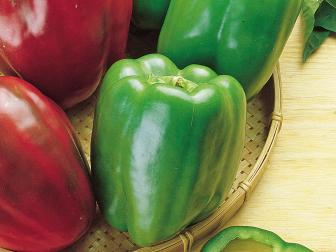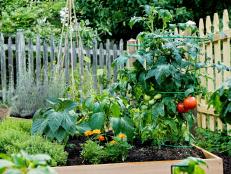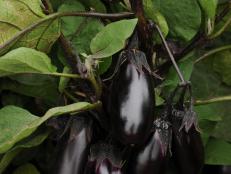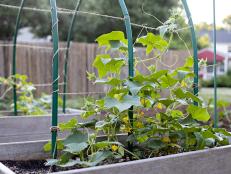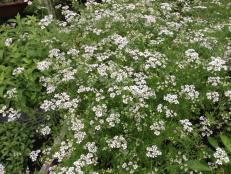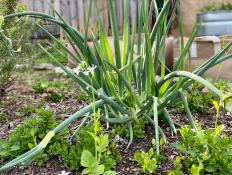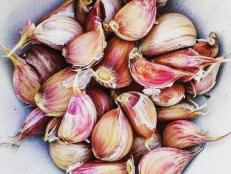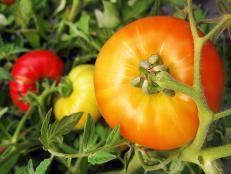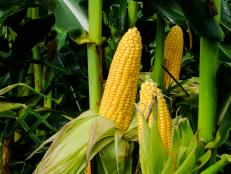Companion Planting for Sweet and Hot Peppers
Homegrown sweet and hot peppers top most gardeners' wish lists for the summer garden. Learn companion planting techniques that may protect your peppers from pests and boost your harvest.

Sweet or spicy, fresh or dried, peppers (Capsicum sp.) are a staple in the kitchen and the vegetable garden. Although peppers can be a little finicky to get started — especially from seed — these veggies are easy to grow once they get going. Try growing your peppers with the plant partners outlined below to maximize pepper health and productivity.

All-AmericaSelections.org
Small peppers fit neatly in a window box and provide a splash of color—along with a tasty harvest. Cajun Belle peppers offer a just-right blend of sweet flavor and spicy bite that every member of the family will approve. This 2010 All-America Selections winner frequently has fruit on the plant in several shades: lime green, orange and bright red.
What is Companion Planting?
Companion planting improves the health and productivity of peppers and other vegetables by feeding the soil, attracting beneficial insects like pollinators and predators of pests, and limiting pest and disease damage by camouflaging crops, repelling pests, displacing disease-causing organisms, or luring pests to another area of the garden. The cornerstone of companion planting is plant diversity. Cultivating a variety of vegetables, herbs, and flowers from different plant families is a great way to nourish your garden ecosystem.
Pepper Companions
To Improve the Harvest
- Pair hot peppers with annual flowers and herbs like cosmos, zinnia, borage, and basil to increase visits from pollinators and pepper yields.
- Interplant beans with peppers to maximize pepper growth and increase yield. For best results, sow bean seeds one week before transplanting pepper seedlings.
- Grow peppers with garlic to increase organic matter in the soil, feed soil microorganisms, and make important nutrients like nitrogen, phosphorus, and potassium more available. Pairing hot peppers with garlic may also decrease the incidence of Phytophthora blight disease.
- Grow peppers after a legume cover crop, like hairy vetch or cowpeas, to increase the amount of available nitrogen in the soil and improve pepper yields. Use the cover crop residue as a mulch around pepper plants to help control weeds during the growing season.

Julie Martens Forney
Dill is a helpful plant in the vegetable garden because its small flowers attract beneficial insects, including hoverflies and ladybugs (both prey on aphids), wasps of all sorts (prey on caterpillars and other insects), spiders and pollinating bees.
To Control Pests
- Interplant with French marigolds, basil, or plants in the onion family (like garlic, leeks, onions, or chives) to deter aphids. Marigolds and basil also attract many species of predators of common pepper pests including aphids, thrips, white flies, and mites.
- Grow peppers with rosemary to repel aphids, thrips, and whiteflies. Research suggests that rosemary is most effective at deterring aphids from peppers from 1.5 feet away and loses almost all effectiveness at 5 feet. Potted rosemary will work just as well at repelling aphids and be much easier to move with pepper in seasonal crop rotations.
- Companion plant with basil or thyme to discourage yellow-striped armyworm butterflies from laying their eggs on your peppers. Yellow-striped armyworm caterpillars are voracious feeders that can damage fruits and quickly defoliate peppers and other vegetable plants.
- If you’ve struggled with pepper maggots tunneling in your bell peppers, lure flies away by growing a trap crop of hot cherry peppers around the outer edge of your garden.
- Grow open-flowered herbs and vegetables in the carrot family (including dill, fennel, and parsley) to attract a host of beneficial insects like ladybugs, lacewings, and parasitic wasps that eat garden pests.
- A living mulch of cowpeas may repel aphids and nematodes from hot peppers. Keep the vigorous living mulch trimmed to prevent competition between cowpeas and peppers for sunlight, water, and nutrients. Cowpeas also make nitrogen from the atmosphere available for peppers to grow and have allelopathic properties that prevent seeds from growing. Although this quality makes a living mulch of cowpeas very effective at limiting weed competition, it will also prevent new successions of vegetable seeds from sprouting.
- Growing chile peppers after a crop of broccoli may reduce populations of southern root-knot nematode in the soil. For best results, incorporate the plant residue into the soil after harvesting the broccoli florets.
To Control Disease
- Grow peppers with corn to decrease Phytophthora blight and increase yields. Phytophthora fungal spores are attracted to both pepper and corn roots; however, corn roots exude antimicrobial substances which can decrease the disease population in the soil. Researchers found that in field conditions, corn plants can form a “root wall” that limits the spread of Phytophthora to vulnerable crops.
- Plant bell peppers after a cover crop of winter wheat to decrease the incidence of Phytophthora disease. Transplant pepper seedlings directly into the cover crop residue without tilling for best results. The wheat residue will also work as a mulch by suppressing weed growth and preventing water loss due to evaporation.
Tips for Growing Peppers
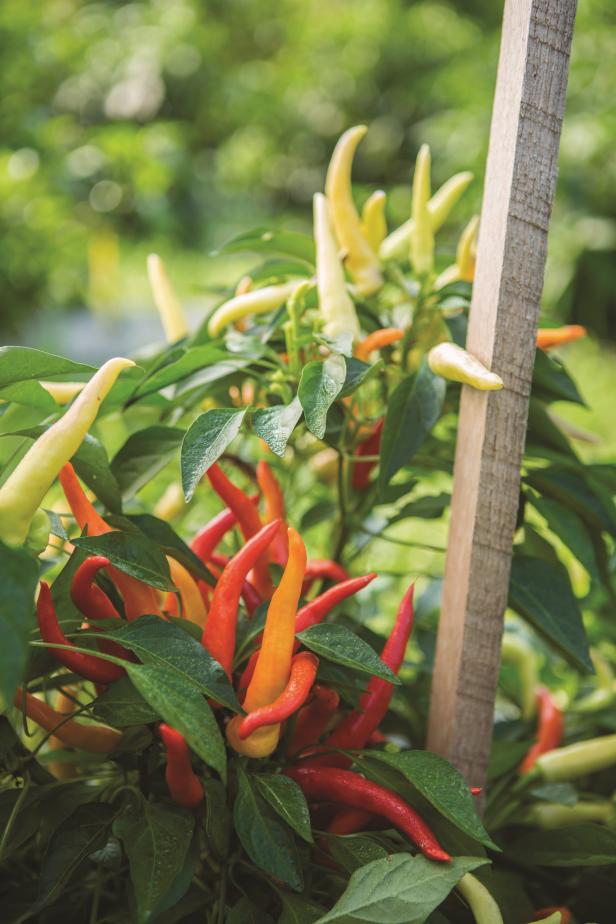
Burpee
Peppers don't require nearly as much support as tomatoes, but they will benefit from staking.
Peppers can be grown from seed if given the right conditions. Pepper seeds require a warm, bright spot to germinate, and they take several weeks to become big enough to transplant. Start peppers from seed 8 to 10 weeks before the average last frost in your area. Large, vigorous seedlings for sweet, bell, and hot peppers can also be purchased at your local garden center.
Plant seedlings out in the garden after all danger of frost has passed and nighttime temperatures are consistently above 50 degrees Fahrenheit. Read the seed packet or plant label for spacing instructions for the variety grown, but a good rule of thumb is that peppers should be spaced about two feet apart. Support peppers as you would a tomato plant with a stake or cage.
Peppers also grow happily in containers, so long as the pot is large enough with good drainage. In fact, potted peppers can be overwintered inside and may even produce some fruit as a potted plant. However, you will need to water container grown peppers more frequently than garden grown peppers.
Peppers should be grown in full sun (at least 6 hours a day) with rich, moist but well-drained soil. Amend soil with compost or manure before planting. Plants will produce more fruit if they are harvested regularly. Pulling fruit could damage the plant, so use hand pruners or snips. Remember to wear gloves to harvest hot peppers, and avoid touching your face until you’re able to wash your hands.
Sweet Pepper Varieties to Grow 17 Photos
These nutritious, rainbow-colored varieties will bring great taste to your table.
Tips for Crop Rotation
- Peppers and their relatives (tomatoes, eggplants, and potatoes) are susceptible to the same pests, which means they should be grouped together and grown in a different area of the garden each season.
- Grow peppers after beans, peas, or other legumes. Peppers and other solanaceous plants are heavy feeders – especially when it comes to nitrogen. Legumes like beans and peas fix nitrogen from the atmosphere and make it available to other plants.






